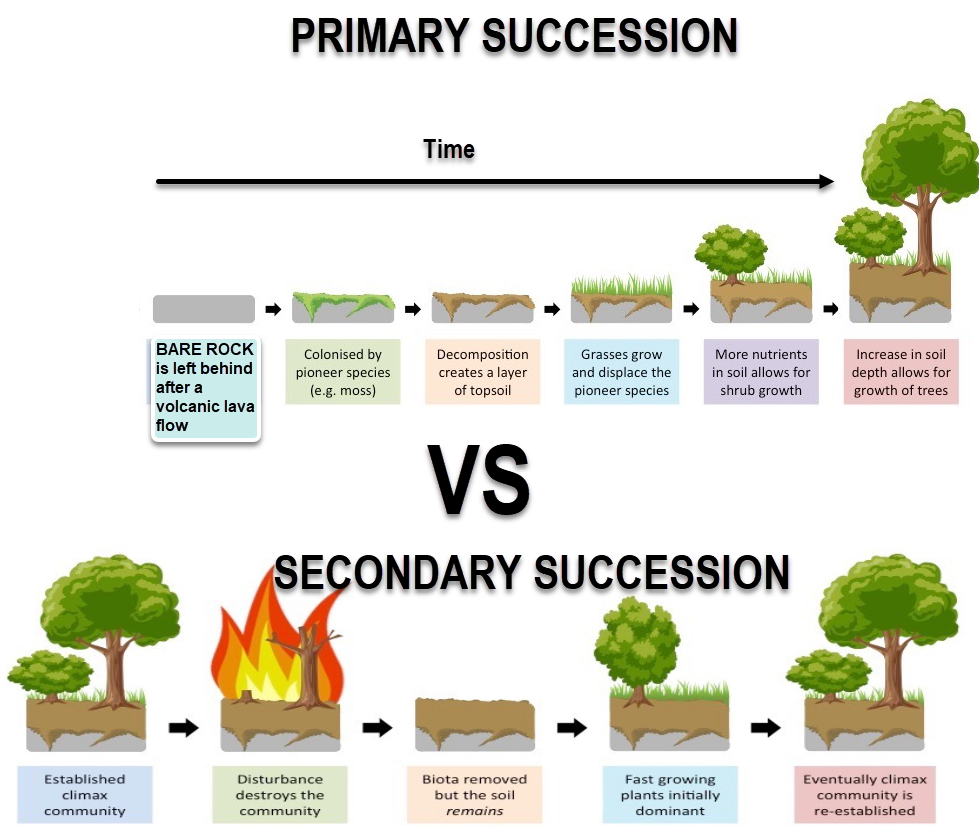The concept of succession was first clearly put forth by Clements (1916). The classical use of the term involves three fundamental concepts (after Mitsch and Gosselink, 1986):
- vegetation occurs in recognizable communities;
- community change through time results from the biota present modifying the environment (changes are autogenic);
- changes are linear and directed towards a climaxecosystem (Odum, 1971).
Succession is the predictable and orderly changes in the composition or structure of an ecological community. It’s a colonization of a disturbed area that eventually leads to an increase in species diversity. Succession is divided into two stages- (1) Primary Succession and (2) Secondary Succession.
 Trees are growing on meadows and fields that are not cultivated anymore
Trees are growing on meadows and fields that are not cultivated anymore
Primary succession deals with the recolonization of bare ground. The primary succession has r-selected organisms– species that can survive at high disturbance areas and are fast growing organisms. There are several factors that can cause disturbance- (1) people, (2) diseases, (3) fire, (4) precipitation/floods, (5) wind/hurricanes/tornadoes, (6) temperature extremes (like freezing or extreme heat), and (7) volcanoes. In other words, the communities that are in early succession will be dominated by fast-growing, well-dispersed species. The other stage of succession (as succession moves forward) will be replaced by more competitive speciesWikipedia:en:Ecological succession/Succession. A good example of primary succession is the ecological response to the Mount St. Helens eruption in 1980. Bishop et al. 2005[6] describes that a primary succession landscape like Mount St. Helens may teach us fundamental mechanisms that describe the formation and function of ecological communities. The use and understanding of these mechanisms may lead to the restoration of devastated landscapes.
The other stage of succession is secondary succession which is the recolonization of partially cleared areas (this occurs after primary succession). Eventually, secondary succession/colonization leads to mature communities called climax communities which are stable communities. The secondary succession communities have k-selected organisms-organisms that use the limiting resource the best and therefore can out-compete other individuals The secondary succession may include a seral community– an intermediate stage found in ecological succession in an ecosystem that advances towards its climax community.




